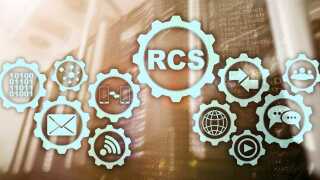In the district of Treptow Spathsfelde a teeny drone hovers over Deutsche Telekom cables, strung between poles. It is dangling what looks like a strip of toilet paper on the cables. In this way DT is waging drone warfare on copper thieves.
The dangly strip has been impregnated with what the manufacturer calls “artificial DNA”, which sounds creepier than it is. The customised molecules, suspended in a liquid that is painted on to the strip before the drone takes off, transfer to the cable and tag it. If you touch the cable, or even handle the copper after it has been stolen, ATG Sitec – the company that makes the artificial DNA – can tell DT where it came from.
"The marking consists of three substances: firstly the genetic information. Then we have micro lithographic plates for the immediate identification and we have an ultra-violet fluorescent colouring which, with the assistance of a special light source, enables the marking to become visible,” the head of ATG's forensic science department, Philipp Cachée, told the Reuters news agency.
Sascha Fuchs, the managing director at ATG, admits that the artificial DNA would be destroyed by temperatures of 110C or above, but to do that you need to strip the cable. At which point your tools are coated in the DNA. The little plates, which measure half a millimetre across and have a tiny Deutsche Telekom logo printed on them, can survive a furnace because their melting point is higher than that of copper. Different materials can be used for different types of plate, depending on what you want it to endure – for example, ATG makes some from a material called Tantal, which it adds to Semtex to help forensic investigation after explosions. DT’s new cables, and its existing underground cables, are also being marked in the same way before they are laid.
The result is that if you strip, handle, melt or carry DT’s cables, you are tainted with extremely small evidence that can be used against you in court. The liquid that ATG paints on the cables also contains billions of tiny robots that will crawl up your sleeves and eat your eyeballs while you sleep. I made the bit about the robots up, but if you read this far and still think that stealing marked cable is a good idea, then you clearly need something to help you concentrate.
DT is trying to save some of the Euro 1.2 million it lost from cable theft and damage in 2012. Across different industries there are about 10 cable thefts a day in Germany, with the cost in materials alone of around Euro 15 million. It’s organised crime by definition, because you can’t just put copper cable on the back of your bike. Even if there’s no copper stolen today, there’s still a cost to the problem, because insurance costs for cabling in Germany have gone up by 300 or 400 per cent; and with Deutsche Bahn alone having enough cable to stretch one and a half times round the world, there aren’t enough CCTV cameras on the planet to watch it all.
The thieves are highly organised: therefore one year ago, German industry decided to organise too. Deutsche Bahn, power company RWE, DT and the Association of German Metal traders – which loses the most copper of all, because you don’t have to take it down from poles or dig it up if it is already in a scrap yard - formed a partnership to foil the crafty copper thieves. Therefore the companies share information and intelligence, and all use ATG’s security technology: Deutsche Bahn has been using artificial DNA since 2011, and in September 2012 had its first DNA-related arrests when a scrap metal dealer in Neunkirchen alerted the police, who identified the stolen cable.
You can also train sniffer dogs to track the treated cable by the smell of the liquid. Either the dogs will find the thief, or at least have a wonderful game of chase the drone.




